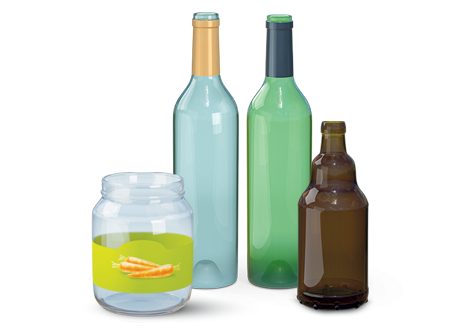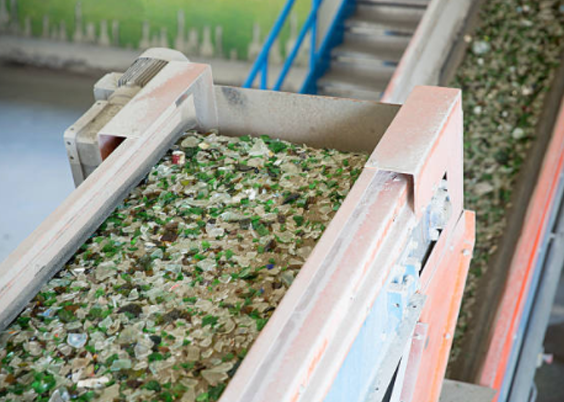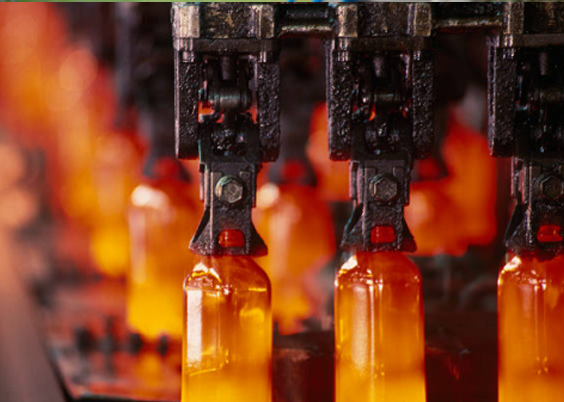Glass
Glass is perfectly suited to recycling. It can be constantly melted and recycled without any loss of quality.

Why recycle glass?
Glass is made of a mixture of sand, sodium carbonate – also known as soda – and lime. When new glass is made, temperatures between 1,500 and 1,600°C are needed to mix the three components. By using recycled glass, the glass factories need up to 25% less energy, and less than half as much soda is required to bring down the melting point. So we save natural raw materials and reduce CO2 emissions, which benefits our climate.
Good sorting = better recycling
A number of materials make it difficult or even impossible to recycle glass. The heat-resistant glass of oven dishes, hot plates and other such items may look like glass, but it is not compatible with the recycling process because it has a higher melting point. Earthenware, stone and porcelain disrupt the process, as well, and can lead to production defects in the new bottles. So here again, good sorting is the message. We rely on you for that, too!
This is how it works
- Separate collection
You can put glass bottles and jars in the bottle banks, underground containers or sorting streets in your town, city or commune. In some regions glass is collected house to house.
It is important for the recycling process that clear and coloured glass are separated. After all, clear glass is recycled into clear glass and coloured glass is again coloured. So in most cases, separate bottle banks or containers are provided or they have two separate compartments. The lorries that fetch the glass also have a separating wall. In the recycling company, the lorry unloads its contents in two piles: clear glass on one side and coloured on the other.
Only when glass is collected house to house, which is the case in a limited number of towns, cities and communes, no distinction is made between clear and coloured glass.
- Cleansing
First, the largest impurities are removed, with a specific focus on heat-resistant glass, pottery, stone and porcelain, as these can seriously disrupt the recycling process. The glass is then broken into shards automatically using various techniques. The size of these shards corresponds to the required end quality. Metals are removed using magnets and eddy current separators. All recycling companies are equipped with advanced optical systems that remove further impurities and can even separate the glass on the basis of colour if it has not been collected separately.
- Melting
The clean glass shards, also known as furnace-ready glass, are melted and reshaped to take on a new life as a bottle or jar.



Applications
Glass can be endlessly recycled. So the end products are again bottles, containers and jars.






